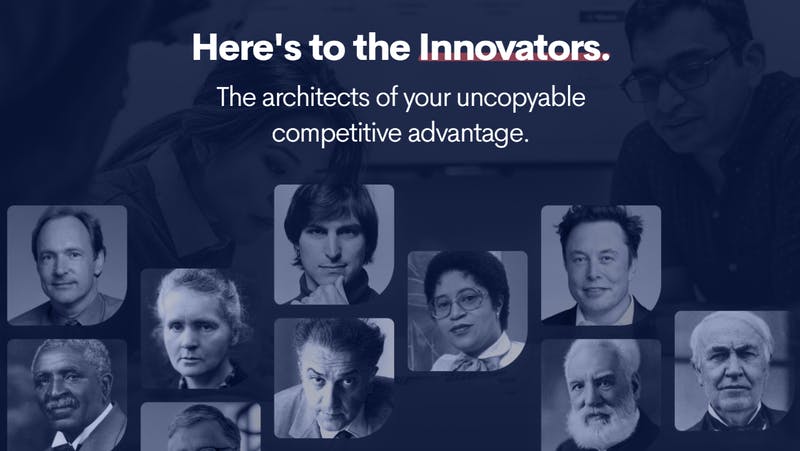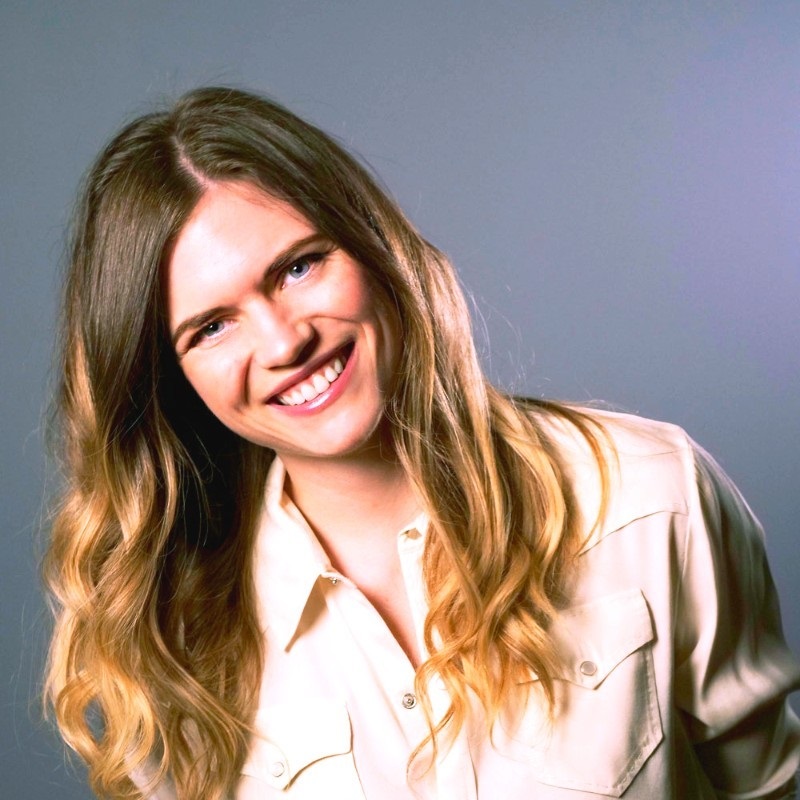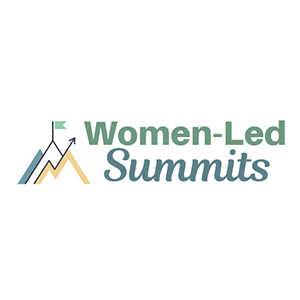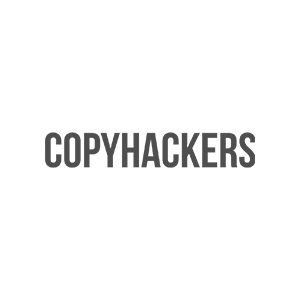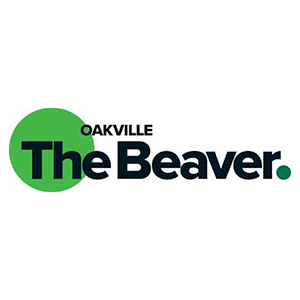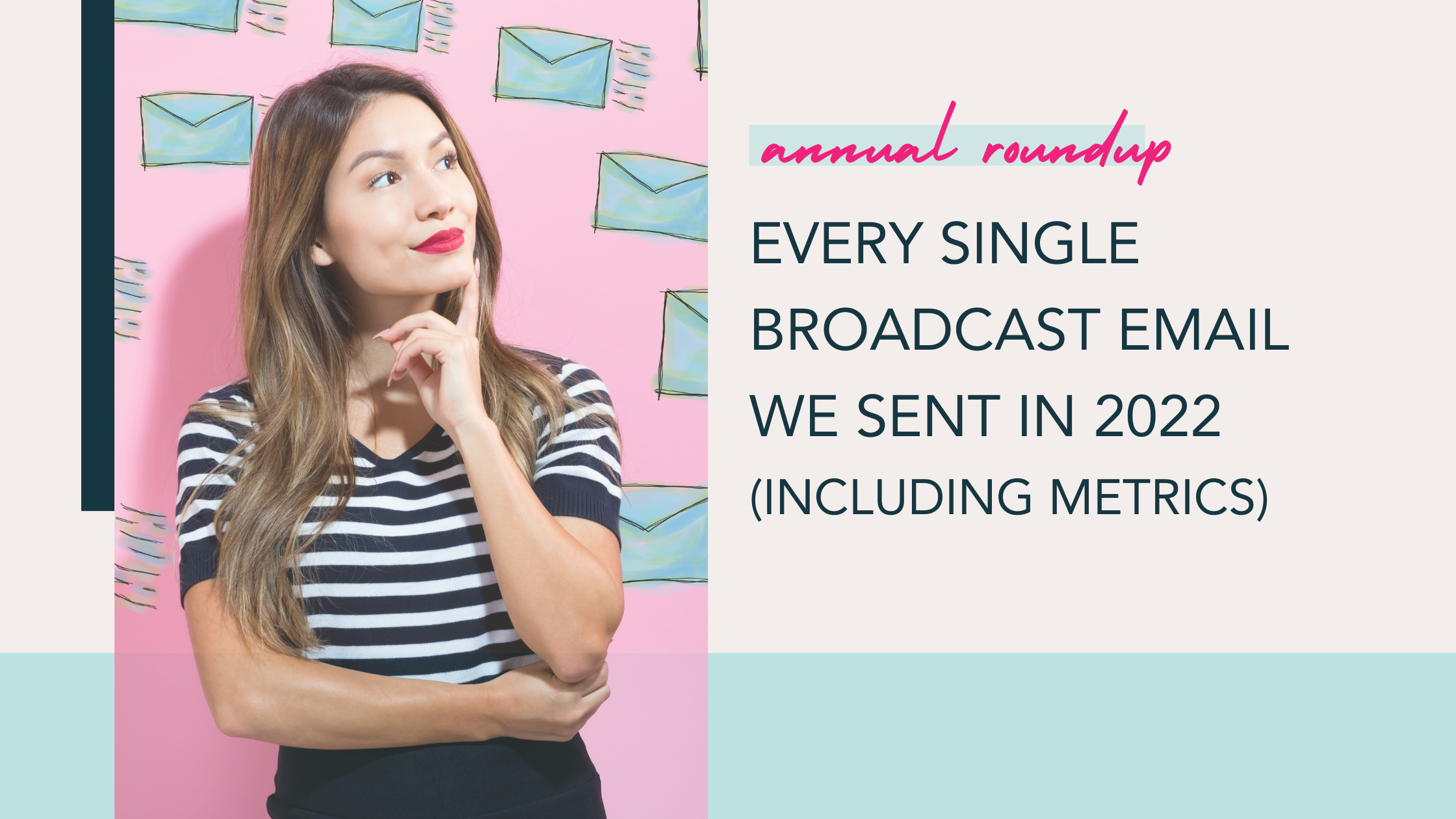
As conversion copywriters, we write a lot of emails for clients.
We write email automations, or evergreen sequences, which are part of the individual subscriber’s journey.
We also write emails that you’d typically call “newsletters” — these are the emails that go out to a list or segment and tend to be seasonal. Sometimes we call these “broadcast” emails.
For our own business, email marketing is essential. We have email automations running in the background, welcoming new subscribers and making offers. As often as possible (without overdoing it), we also send out broadcast newsletters.
In early 2022, I wrote about our email journey and shared the archives (emails from 2019 to 2021). I also included mistakes made, lessons learned, and our email metrics.
Now, it’s time to post a recap of 2022 in emails.
Here’s what was great about these newsletters:
- I was clearly still having a lot of fun writing email and sharing what I was learning!
- My cadence was great — about every ten days until it fell off a cliff around October (I was moving and exhausted)
- Mostly, I A/B tested subject lines
- I used a lot of emotion in subject lines, and those nearly always won
- Late in the year, I started resending emails to subscribers who didn’t open them with a new subject line, which is a good way to get more eyes with very little extra work
Here’s where I could have improved:
- List growth is non-existent because we aren’t creating new lead magnets, and the subscribe/unsubscribe rate is about equal
- I started out sending broadcasts nearly any day of the week, but often on the weekend… which means some subscribers in active automation sequences were likely getting two emails in a day!
- Eventually, I stuck to a consistent day (Monday) when no automations go out. Mondays aren’t great days for emails, but it’s more important that my automations keep going because those are the sales emails!
- Not a fail, not a win: Often, there was no link to click except in the footer (link to my contact). These emails were more about engagement and keeping people aware of what I do.
Alright, you can browse every single 2022 email below. I’ve included winning and “losing” subject lines, so you can see what’s working.
Subject: 7 Tips for Writing a Brand Manifesto
821 Recipients
47.5% Open Rate
20.1% Click Rate
382 Clicks
5 Unsubscribers
Sent Sat, Jan 8, 2022, 5:36pm EST
Hey there,
We’re all a little squirrely these days, am I right?
Ready to burst out and mingle our humid plumes with others and be on with it.

It’s what I tell myself while I patiently wait to see my work go live in a big website launch.
After copy, there’s design and custom coding.
Integrations and automations.
Permissions from Very Famous Clients to use their case studies and testimonials.
So, I am DELIGHTED that a website I wrote last summer is now live: https://uxreactor.com/
It may be the last full conversion copy project I do for a new B2B client. (Read more about why here.)
From website copy to lead magnet, case studies, and emails, it was the complete package.
And I am so proud of the team.
The design, the marketing strategy, the technical execution… 👏🏼👏🏼👏🏼
Difficult, for sure, but I’ll tell you what was fun:
Writing the brand manifesto.
My copy friend prompted this exchange:

I joke, but all of this is true.
And yet I’ll do it again, not because I’m a masochist…
But because sometimes a brand’s “WHY” can’t be contained in a purpose statement.
Some brands have a manifesto within that’s waiting to be written.
The most potent expression of your reason for being.
The white-hot insight into what must change.
And also an invitation to your audience to see with new eyes and to choose change, too.
As your clients. As your customers. As your raving fans because your brand revealed a soul behind your sales copy.
That’s a conversion.
You don’t need to be the Sierra Club to have a manifesto. You don’t even need to call it a manifesto or give it a full page.
But you do need an original, provocative idea that ties together:
➤ “Here’s why things can’t stay the same” +
➤ “Here’s how we’ll escape the status quo together”
Have a brand manifesto within? Know someone who does?
This brand manifesto service is being sold by word of mouth. There’s no sales page yet.
And though it’s a tool of conversion + branding, it may develop a life outside of Conversion Copy Co.
If you have questions about ⬆️ or about conversion copywriting, hit reply or explore ways we can work together.
Anna Bolton
Conversion Copy Co.
…
Winning subject: What platform makes you squeamish?
Other subject: Blasts from the past: opening the archives
822 Recipients
47.6% Open Rate
15.2% Click Rate
393 Clicks
5 Unsubscribers
Sent Sun, Jan 16, 2022 at 10:00pm EST
Hi there,
Is there one marketing platform that makes you a little uncomfy?
A type of content that you know you need to create far more often…If only it weren’t for the hobgoblins that hold you back.
For me, it’s social media, followed by broadcast emails.
Here’s why:
- Both feel like interruption marketing (even if there’s consent)
- With a mixed audience, it’s hard to write to just one reader (a rule of conversion copy)
- Both are ephemeral. Most social posts and blast emails are profitable for a few days, maybe a week…
So, to face my fears, understand my baseline, and look for opportunities to repurpose, I went back over 2+ years of broadcast emails.
And decided to publish every broadcast email I’ve ever sent, along with thoughts on what’s worked, what hasn’t, and why.
The main lesson that’s easy to extract from my own history with email?
What I know works from writing emails for dozens of clients who use email to generate millions of dollars annually?
Having a very clear WHY.
Why leads to “who” (your audience) and “what” (your core topics) very naturally.
From the lead magnet to the welcome journey and beyond, your WHY is the secret to:
- Attracting right-fit email subscribers
- Converting those subscribers to buyers
- Retaining subscribers ready to scoop up your next offer
And from a hobgoblin perspective…
It’s far easier to write to people who signed up specifically because of your WHY.
As a re-cap:
Conversion Copy Co exists to help B2C e-comm brands get clear on their brand messaging and boost the conversion power of your copy. We specialize in DTC brands on a mission to make and market better products in a better way.
If you’re down to hear more from me about B2C + conversion copy, I’m delighted to have you:)
All the Best,
Anna
Winning subject: Ok, but are they the RIGHT leads?
Other subject: How to Create High-Converting Lead Magnets (That Actually Grow Your Business)
833 Recipients
33.6% Open Rate
8.6% Click Rate
81 Clicks
4 Unsubscribers
Sent Sun, Jan 30 at 4:00pm EST
Hello, hello,
Notice I never insert your name?
That’s because a lot of people resist giving out their real name with their email, and it’s weird to get an email with the salutation:
Hi h5b*99),
I know because I once subscribed to a client’s list as “Test” and now, I get emails like this:
A lot in marketing is like that:
Slick techniques work in theory, but you’ve got to know how they can go wrong.
As an example, I was reviewing email stats and I realized we have crazy-high conversion rates on our opt-in forms.
I also realized it doesn’t always matter. Conversion rate isn’t everything. There, I said it.
In fact, I said it in several different ways in this new post: How to Create High-Converting Lead Magnets (That Actually Grow Your Business).
Check it out to discover:
- The only 3 lead magnets I’ve ever used
- Screenshots of the consistent 50-60% conversion rates (including a funny glitch)
- Why I’d still nix 2 out of 3
- Lead magnet “conversion killers” to avoid
- The freebies that only drag down your conversion-to-sale rates
- 12 steps to create a high-converting lead magnet that generates more buyers
- How to decide whether your hot content idea should really be a blog post, a bonus, or something else
And if you have questions about your lead magnet, hit reply.
I can help if you’re a B2C e-comm brand, and if you’re in another sector, I know at least three lead gen content strategists in other sectors.
Talk soon,
Winning subject: What does it take to grow from 0 to 100M in 3 years? (As a ♀️ founder in a tiny country)
830 Recipients
33.6% Open Rate
6.7% Click Rate
60 Clicks
6 Unsubscribers
Sent Tues, Feb 08 at 3:00pm EST
Hi there,
In a market THIS crowded…
What does it take to catapult from oblivion to brand glory?
Find out in this interview with Suzie Yorke, founder of Love Good Fats.
Suzie and I worked together 6 years ago when she was the highest-paid consultant I knew.
Back then, Suzie was charging ~300/hr to help my client re-position their supplement brand and take back market share.
All the while, she was ideating, formulating, strategizing…
Using her own savings (as a single mother in Toronto) on the long shot of creating a brand that could steal market share from legends like Kind, Larabar, Cliffbar…
I remember when Suzie asked, “Love Good Fats: what do think of the name?“
And when she sent an early box of the bars to review…
My tiny kids crammed them down, all melty in the hot summer sun.
Since then, ❤️Love Good Fats has become a Canadian legend, ranked the #1 Top Growing Company in Canada (2021).
And Suzie…
Who I always knew was brilliant and driven…
But never knew was an absolute brand GENIUS…
Suzie has led her startup to hyper-growth, from 0 to 100M in 3 years 💥
Read Suzie’s formula for growth in the post.
Hint: “The first step is having a really tight brand positioning.”
Yours,
Anna
Winning subject: 100.96% lift in sales (when the best product is OOS)
Other subject: 90-day makeover for this B2C e-commerce site
836 Recipients
36.2% Open Rate
6.0% Click Rate
54 Clicks
3 Unsubscribers
Sent Fri, Feb 18 at 4:15pm EST
Hi there,
Last fall, I checked the stats on my very 1st client’s website.
Traffic was seriously dipping.
New content was… erm… not up to standard.
(Common when you’re outsourcing.)
Posts that I’d written in 2014 (when I was a content marketer) were aging…
(Even though some of those posts still get thousands of visitors a month.)
And everything needed a refresh.
All the while… Outside of e-commerce, in Shopper’s Drug Mart, Costco, Loblaws, and the other big Canadian retail outlets…
The client’s sales are still growing massively. Because their brand messaging and their products are so strong.
But DTC sales are much more profitable.
And of course, bricks and mortar buyers often decide between brands based on the digital experience, even if they never order online.
To solve the issue, here’s the process I led:
⏩ Audited the entire site (using a super-slick process I learned from Viola Eva)
⏩ Did very custom, in-depth keyword research (the type you can only do when you really know the brand and the products)
⏩Created a plan to nix, merge, and redirect underperforming posts
⏩Optimized posts with decent traffic and ranking (ones that just needed a lift)
⏩Optimized core website pages + product pages to convert AND rank
⏩Added more sales language to blog posts, to drive more of that traffic to the store
⏩Advised on upgrading the UX on the blog, core site, and shop pages
⏩Mapped out a content plan to close gaps in our keyword coverage
⏩Brought in The Content Direction Agency to produce high-quality new content
Meanwhile, the SEO consultant is working on backlinks…
And the results?
⭐ In the past 90 days search traffic has shot up from about 10k pageviews per day to about 20k
⭐ Compared to last year January, e-commerce sales are up 100.96% (Even though the most popular product — by far — is OOS.)
Being able to diagnose the issue, lead the initiatives, and get the results took thousands and thousands of dollars and hundreds of hours spent on courses (#worthit).
It took first learning content marketing, then conversion copywriting, and then circling back to study SEO.
And it still takes consulting with professional SEOs in the process. (Because hubris is a killer.)
But it’s so satisfying to generate bigger lifts by working across these disciplines.
The fact is, if I had only optimized the website copy and product pages to convert, we would have seen a lift…
But not a 100% lift.
Not with the best product currently unavailable.
If you need help threading the needle between content and conversions for B2C e-commerce, reach out.
Yours,
Anna
Winning subject: Novelty: Friend or Enemy? (Frenemy?)
Other subject: Novelty, dopamine + your brand
838 Recipients
40.5% Open Rate
8.1% Click Rate
121 Clicks
6 Unsubscribers
Sent Sun, Feb 27 at 4:30pm EST
Hi there,
The siren call of the new, new, new…
Your customers feel it. We all feel it. Novelty-seeking is human.
In fact, you can track novelty-seeking along a personality spectrum. Your high novelty seekers are also a little more daring, extraverted, and open to experience…
But we’re all susceptible to novelty because it delivers a hit of dopamine to our brains… 🧠 (That’s the “zest for life” neurotransmitter”. Yum.)
That bit of brain science, however, is tricky for sustainable, made-to-last brands. (And frankly, it’s tricky for any brand that isn’t selling on the Wish model.)
Because the entire buy-less-buy-better movement is premised on the idea that people can and will choose #sustainability over novelty. 🌍
But what if it’s not an either/or scenario?
What if your brand can deliver novelty in more sustainable ways? (So you never have to say, “Maybe we WILL tell them to buy one in each color…”)
What if you can help customers get their “fix” of novelty + further cement their loyalty to your brand, without it costing the earth?
Here are 5 ways you can deliver novelty (and dopamine) directly to customers through your brand, without compromising your sustainability:
🏹 Invest in more novel visual creative — video, photography, illustrations. (Bring more artists on board, let them freewheel, and see what they create.)
🏹 Invite more creative user-generated content + reward novelty from users. (Chances are, you have some very divergent users with very novel ideas.)
🏹Let your copy push the boundaries. Make it more emotional, darker, funnier — whatever’s on-brand, but don’t make it predictable!
🏹Create novel experiences for your customers. Online and IRL community experiences hit that novelty button for your extroverted & open-minded customers.
🏹Show users how to style or use your products in novel ways. (Cue the content creators.)
Added bonus: Delivering a novelty bump to your customers increases the perceived value of your brand. Novelty is worth more.
And I don’t have to spell it out, but I will: Premium pricing means you can keep paying better wages, keep greening your supply chain, and keep making the world a better place.
Want to talk about sustainable conversions for your sustainable brand? Reach out.
Yours,
Anna
Winning subject: Sloth, gluttony, pride… do they sell?
Other subject: Patience, kindness, humility… do they sell?
844 Recipients
39.5% Open Rate
9.0% Click Rate
139 Clicks
6 Unsubscribers
Sent Wed, Mar 09 at 4:25pm EST
Hi there,
There are respectable reasons people buy…
And there are unspoken reasons.
When I bought an electric car, I was aware of thinking, “Now my kids will really admire me.”
Silly human. So vain.
But it reminded me of Joanna @ Copyhackers teaching how to use the 7 Deadly Sins in copy…
Of which I bring you a prime vintage example:
“Listerine toothpaste — for lazy people”
Most ads from this era only depict a certain kind of woman:
The industrious housewife dressed to the nines scrubbing bathtubs or admiring appliances.
And I’m betting that our great-grandmothers rolled their eyes at those ads, too.
But this ad.
This ad offers forgiveness and flattery, while also the quick & easy alternative.
Which is rare. Most brands today still don’t tap into the real, slightly embarrassing but very human reasons people buy.
And we should!
It’s more persuasive. It’s more sticky. And it’s just more relatable…
For example:
- Sloth: Admit that your DTC furniture is for people who would rather live in beanbag chairs than assemble anything with more than 3 steps
- Lust: Tell them your mattress has more bounce because, well, ahem (my emails will go to spam if I say it)
- Gluttony: Declare that your subscription snack box is 30% bigger for uninhibited snackers who can’t afford to get hangry
Of course, there are some sins we should leave back in the ’70s ads… But sins without victims, I’m all for acknowledging.
You can use the 7 Virtues, as well, and even test sins vs. virtues.
Just for fun, I am currently A/B testing the subject line of this email.
- One subject line lists 3 sins
- The other lists 3 virtues
Which do you think won?
Yours,
Anna
Winning subject: Does your brand need to put on hard pants? 👖
Other subject: “It’s hard to take you seriously when you’re wearing pajamas all day”
847 Recipients
32.1% Open Rate
3.5% Click Rate
40 Clicks
6 Unsubscribers
Sent Fri, Mar 18 at 1:40pm EDT
Hi there,
Awhile ago I was sharing with my 8-year-old some truly high-value wisdom…
Really Important Truths on how we can only control our own behavior…
He listened and then laughed, saying, “It’s hard to take you seriously when you’re wearing pajamas all day.”
I laughed, too.
Because I know how that is. I absolutely expect continuity between how things should be and how they appear. We all do because discontinuity creates cognitive dissonance.
It’s the same with our brands and our marketing.
We can become so focused on the places we WANT people to look…
The marketing they SHOULD care about…
That we don’t notice the page they have no business even noticing that’s still wearing its pajamas…
And when that happens, well, some prospects will experience cognitive dissonance.
It’s when the doubt creeps in. Especially when your only opportunity to establish your credibility is online.
That’s why I recommend audits.
In audits of sales copy, content, and UX, I’ve discovered:
- Bizarre automated ad copy that clients weren’t aware of
- SEO content that actually undermines sales
- Unbelievably engaging, popular content with no mention of the product and no CTA
- Differentiators that are buried (and might as well be invisible)
- Confusion finding and choosing the right product (so it’s almost impossible to buy)
- Famous brands that forgot to splash their awards and media mentions front-and-center
- Landing pages that are all about the brand but forget to sell to the unconverted
Some of these, you’ll want to fix right away.
But we also prioritize. Based on what the data says… But also based on context and values.
For example, my context at that moment, in that conversation:
“It’s dark, cold, and our world has closed again. Pajamas may undermine my status, but I’m only getting dressed for meetings.”
Speaking of which… The days I DO get dressed for are VIP Days, which are just right for audits.
During a VIP Day, we can zero in on the places where your brand really DOES need to put on its hard pants.
VIP Days now have a dedicated page.
Reserve yours to replace cognitive dissonance with more conversions.
Yours,
Anna
Subject: 12 rules of high-converting e-commerce landing pages
(No A/B testing on the subject line)
848 Recipients
41.5% Open Rate
14.9% Click Rate
221 Clicks
3 Unsubscribers
Sent Mon, Mar 28 at 3:01pm EDT
Hey there,
If you’re in e-commerce or if you work with e-commerce brands…
Then you depend on profitable ad campaigns.
You have your Google ad strategy…
Your social ad strategy…
Your scroll-stopping, click-capturing ad creative.
But what happens after the click? Where do you send that paid traffic after you’ve caught their attention with your ad?
Most e-commerce brands send paid traffic to a product detail page, a category page, or even a homepage.
And most brands are losing money for that very reason.
Because those general-purpose pages aren’t designed to capture and hold the attention of your paid traffic.
That’s why in this post, I break down the “12 rules” of high-converting landing pages. And explain why when you apply these principles, you can lower your cost per click as well.
Check it out and let me know if you have any questions about your landing pages.
All the best,
Winning subject: Utter clarity… or conversions?
Other subject: My Mom bought me a Lomi?
852 Recipients
39.7% Open Rate
7.9% Click Rate
122 Clicks (only link was in footer, amazingly)
1 Unsubscriber
Sent Sat, Apr 09 at 4:25pm EDT
Hi there,
Have you seen the ads for Lomi?
My Mom messaged me before Christmas asking what I think.
I said, “Cool, but who needs to make soil that fast?”
We said no more.
But when it was time to open gifts, Mom pulled out a package, a little sheepish.
She said she was sure she’d ordered a Lomi…
But what came in the mail?
A vinyl garden bag.
The kind you grow potatoes in.
Turns out Lomi is on backorder, which my Mom didn’t realize.
Which made me think about utter clarity in e-commerce experiences…
Unsurprisingly, some people believe conversion copywriters ONLY care if we get the click.
After all, we market ourselves as the strategists hyper-focused on the next most valuable click.
What we don’t often talk about?
The endless thought we invest in making sure the next click is well-informed so buyers don’t experience confusion and regret.
Of course, user error is a real and separate issue. My Mom and countless others like her spent most of their lives physically placing objects in carts and seeing the numbers ring up on a register before opening a checkbook.
Even online shopping veterans like me are reckless and prone to oversight.
That’s why, when I revamp product pages and e-commerce check-out experiences, I ask:
“How can we be utterly clear on the offer, the terms, the inclusions?”
In some cases, we have to break conversion “rules” for the sake of nurturing a truly informed customer.
- Customers who are less likely to request costly returns
- Customers who have no need to jam up your customer service channels
- Customers who wouldn’t dream of leaving a one-star review because even if they have an issue, they admire and trust your brand
The truth is, conversion copy and CX and UX are all mind-bendingly intertwined. Because each takes you deep into the minds of customers… So you can’t help but see the funnel the way they see it.
Need help crafting copy that’s utterly clear and high converting? Reach out.
Yours,
Anna
Winning subject: 📢 New site: brandmanifesto.co
Other subject: Check out the new Brand Manifesto site I made
855 Recipients
44.6% Open Rate
16.7% Click Rate
275 Clicks
5 Unsubscribers
Sent Sat, Apr 16 at 12:15pm EDT
New news!
If you’ve been around here since January, you know I had a brand manifesto service in the works.
It’s now live, with a standalone home online: EXCITE Brand Manifesto Co.
The idea came out of a project last summer.
I was working with a client who has a strong POV.
You’d be surprised because they’re not radicals. They’re not wild branding folks. They’re professionals who see what’s broken in their industry, what’s possible, and how they want to be part of the change.
So, I said to the marketing team, “I think they need a manifesto.”
At the time, I was going on gut. I just felt that the nuance and passion and breadth of their POV wouldn’t fit in a value proposition… Or in any of the set pieces of conversion copy.
A manifesto is different because it’s a vehicle to channel your Big Perspective into a customer-facing piece of copy. It’s part advertising and part rallying cry.
Does every brand need a manifesto?
No, I wouldn’t recommend it. Every brand needs a message.
Some need a manifesto, even if you call it by another name or weave it into your About page and don’t name it at all.
I think you know if you have a manifesto burning in the soul of your business. You feel ready to upend the status quo. You’re impatient for the future you know could be now if you could only change hearts and minds.
Manifesto brands are more challenging, more provocative, but also more inspiring for the right people.
Book a meeting if that’s you.
Anna
Winning subject: Some buyers are just LIKE that
Other subject: 4 types who land on your product pages
853 Recipients
33.5% Open Rate
3.8% Click Rate
36 Clicks
6 Unsubscribers
Sent Mon, Apr 25 at 2:40pm EDT
Hey there,
This is Marcy climbing into what we call “the toaster.”
The fully electric car itself is not a thing of beauty, IMO. It’s neon green and boxy — not a Tesla.
But there’s a shortage of EVs, I was lucky to find one, and I think I shocked the salesman by closing way too fast.
ALL I needed to know was how to charge it.
Nice guy, Joe, he kept trying to sell me on the features when I’d already made up my mind.
Some people who land on your product pages are like that, too.
They’re either highly product-aware or fast-paced decision-makers.
So, they’ve either gone through the process of comparison shopping before landing on your page, or they have few criteria.
Visitors like that?
They just need your product page to facilitate a smooth slide to the checkout.
Some will skim, quickly, before adding to cart.
They’re looking for reasons NOT to buy or for fast facts.
That’s one reason why product pages still have to deliver rich information that’s easy to find…
Without interrupting the user’s path to achieving their goal.
The other reason is that you never have just 1 type of buyer. You have at least 4:
- The “tell me only what I need to know” types
- The opening-every-accordion, fine-toothed-comb types
- The “just make this fun for me” types
- The “just make me care” types
(Credit to Copyhackers’ 10x Web Copy for the visitor typology, which I’ve rephrased here.)
Each of these types has specific needs. Pre-reqs to a conversion.
So, when we optimize product pages to convert, we think about all four buyers and how we can deliver everything their hearts desire in a shopping experience.
And the truth is…
We can’t make it easier by coming up with an avatar of our Busy Executive, for example…
And deciding that our ideal buyer will only tolerate short copy.
Because humans are weird and wonderful.
The executive who signs massive deals with utter decisiveness at work can behave like an utterly different person when it comes to shopping for sweaters.
So, we create product pages that make it easy for each type to find their personal ‘conversion trigger’.
Maybe it’s the guarantee. Possibly it’s a “how-to”. A section on your ethical manufacturing. Or, reviews with custom questions so the shopper can see, “Oh, people my height and weight love these pants.”
Hyper-optimized product pages take more strategy.
The design is harder, for sure. (Walls of text are out of the question.)
But in tests, these product pages always win.
Maybe you’re lucky, like Joe, and you have buyers who come astonishingly, disconcertingly pre-sold.
If not, feel free to reach out and ask how we can optimize your e-comm product pages.
Winning subject: The Dip Before the Spike
Other subject: Conversions doubled… but THIS metric went down
852 Recipients
27.2% Open Rate
0.2% Click Rate
4 Clicks (no link to click except in footer)
3 Unsubscribers
Sent Mon, May 02 at 1:10pm EDT
Sometimes we talk brand and copy techniques…
Sometimes we talk numbers.
Because while I am here for ideas ALL day and thoroughly qualitative by nature, I also love the game of watching graphs and seeing the results of our work.
So, question:
Is it possible to double your conversions with less traffic?
Answer:
Why yes!
Because e-commerce brands often rank for terms that are only tangentially related to their products.
(Not just e-commerce brands. So many brands with brilliant sites are ranking for terms that have nothing to do with their business — and not ranking for the terms that bring in buyers.)
They get a lot of clicks but not conversions.
When we optimize clients’ pages for conversions, we also optimize for clarity, cutting out the random.
And we have a keyword plan for each page.
Those new pages tend to do better in search for high-intent keywords…
While shedding rankings for keywords that never drive the sale.
At first, it can look alarming.
You might even see a dip when you first publish the new page.
(Usually, it just takes a moment for Google to give you back your rightful place.)
But the visitors you’re getting are suddenly more qualified.
And conversions are ticking up…
While maybe your SEO is frowning because organic sessions are down.
After making a few changes in just one month for an e-comm client (with a very established website), here’s what we saw:
We’ve lost some top-ranking (but irrelevant) keywords.
And have twice the sales.
That’s the power of pages that are focused, comprehensive, and deliver an incredible user experience. (While hitting the most valuable keywords, naturally.)
If your store needs a lift like this, reach out.
Winning subject: Are you loyal, or are you like me?
Other subject: Deliver dopamine, earn love
862 Recipients
28.4% Open Rate
0.6% Click Rate
10 Clicks
5 Unsubscribers
Sent Mon, May 16 at 10:02am EDT
Hi there,
Forget your business for a second and just think about how you buy.
Are you loyal to any brands?
To a lot of brands?
Or are you always putting brands to the test?
Hold that answer in your mind because I want you to tell me why later…
Personally, I’m like a bad friend when it comes to consumer brands. Extremely fickle. Almost zero loyalty.
(Which, for the record, is 100% not how I am with actual friends.)
But when it comes to brands…
Unless it’s the one and only in a category, we have a very temporary arrangement.
So I’m always curious about brand loyalty.
What makes other people loyal?
As it turns out, people are loyal for many reasons that a conversion copywriter cannot control:
Your products, your pricing, your customer experience, your competition…
But there ARE a few loyalty levers we can pull without changing any of the above.
👉🏻 Brand positioning. When customers deeply identify with your position (when it’s tied to their very identity)… leaving your brand means leaving themselves.
My client Stix did this by positioning their golf clubs as way cooler and more accessible, even if you’re not a golfer. (Versus nearly every other golf brand that’s associated with exclusivity, complexity, and clunky aesthetics.)
👉🏻 Product-based messaging. When you can make a clear, memorable, believable case for why your products are different and better, customers may not ever look at the other guys the same way again.
For example, when I was creating sales funnel copy for a hair supplement recently, I discovered that the biggest competitor brands use nasty ingredients. Purity became part of our product messaging strategy. (Because who needs neurotoxins in their vitamin?)
👉🏻 Irresistible content — delivered consistently. When you’re in the customer’s inbox or their newsfeed with a consistent dose of dopamine, “you become their daily fix” (I quote Merel Kriegsman, who does this extremely well).
What kind of content delivers dopamine?
Well, it depends on who your customers are. What triggers dopamine for a golfer is NOT what triggers a rush of pleasure for me. But at the core of addictive content is emotion. You must deliver a feeling.
Depending on your brand, that feeling will differ. Excitement, beauty, desire, tenderness, humor… there are options.
Decide which feelings your customers are craving, which fit with your brand, and create a strategy to deliver.
This is a next-level strategy for most of us. I certainly did not think, “What core emotion do I want to deliver?” when I created this newsletter…
But it’s never too late. You can pull it together now, along with your positioning and your product messaging.
But now, tell me about you.
What’s your brand loyalty story?
Are you loyal for any of the reasons above, or for something else?
Honestly, I feel like an alien studying human behavior when it comes to brand loyalty:) So help a space lady out.
Yours,
Anna
Winning subject: I wish I’d done this before creating my website
Subject line: Try this shortcut to faking a brand
856 Recipients
31.3% Open Rate
5.8% Click Rate
67 Clicks
1 Unsubscriber
Sent Mon, May 23 at 9:10am EDT
Hi there,
What if you need a website, but you don’t have a brand?
(Like, not just a logo, palette, and fonts, but a real brand.)
What do you do?
If you answered, “We don’t need a brand. We have performance marketing/direct response copy/an unbeatable product,” I’m going to disagree.
But there is a smart way to fake premium branding…
At least until you can afford to hire the best damn branding talent out there and make your brand iconic.
I’ll tell you how.
But first, a story.
One of my clients is about to launch its CPG product in the US.
In a crowded market.
With a higher price point than the competition.
And with no significant product differentiation.
“We have to build a brand,” I said. “Let’s start with positioning.”
So, a few weeks ago I pulled together positioning in a deck. And to bring it to life, I tied it to a brand archetype:
The Explorer.
“It’s a perfect fit,” the client’s team said.
“Let’s move on,” the Director of Marketing said.
So, we hopped on a call to brainstorm.
“Can we get original photography?” I asked.
The Social Media Lead said, “I could do some shots of guys at the local rink, in the changeroom, with the product in their hockey bags.”
“That’s more of an Everyman concept,” I said.
“No reason they can’t be women players,” he said.
“But… it’s not about gender…”
Not his fault. Turns out no one had sent him the deck.
He had no way of knowing that Everyman isn’t male or female. It’s one of the 12 brand archetypes.
Choosing 1 to 2 archetypes is a branding shortcut that I love for some clients.
If you’re on a budget or have a tight timeline to launch a new site, using the archetype schema can help you to…
- Break out of the tired brand tropes in your industry
- Quickly make creative decisions
- Fast-track the process of identifying your brand idea
- Choose visual creative that supports that idea
- Pinpoint a brand voice, tone, and personality
- Sync that verbal identity with your visual identity
- Convey a coherent and memorable feeling about your brand
All of the above you can do with archetypes, even if you’re not yet ready to invest in serious creative, by a serious agency.
But how do you use archetypes?
It’s a kind of alchemy, to be completely honest. Here’s what you have to consider:
- What archetype does your ideal customer need you to embody as a brand?
- What archetype is not yet taken by the competition?
- What archetypes are a good fit with the nature of your product and your company identity?
To answer #1, you have to ask several questions.
- What does your customer want to feel that’s missing in their lives?
- Who does your customer admire or want to become?
- What forces are holding your customer back from their dream state (what’s ‘the enemy’)?
- How does your ideal customer need to feel before they can say yes to your product?
All of the above you can glean from your voice of customer research.
Based on your answers, find the archetype that best fits. In some cases, you can blend two archetypes, but don’t try to embody the entire wheel.
The point of the exercise is to force creative focus.
This is exactly what I wish I’d done when I had my site built. But I hadn’t narrowed my niche sufficiently to answer any of the above.
Positioning comes before branding. So, do that first before you choose an archetype.
Make sense?
If you have any questions about this shortcut to branding, feel free to hit reply.
Yours,
Anna
Winning subject: Letting others take responsibility (the joy)
Other subject: Take me by the hand, lead me like a child
854 Recipients
32.6% Open Rate
4.2% Click Rate
42 Clicks
2 Unsubscribers
Sent Mon, May 30 at 10:04am EDT
Hey there,
When you get this, I’ll be on a boat like this…
Only, in Greece, sailing around the Cyclades… Which at the time of writing this email is all I know about the trip.
The captain sent an email about prevailing winds, mooring, appropriate footwear…
“Do I need to read this?” I asked, and filed the email away.
It makes me think of a Polish expression that my partner says can’t be translated. Essentially, “Take me by the hand and lead me like a child to the restaurant.”
Sometimes you want exactly that.
Even if you’re used to taking control and responsibility like I am.
But with seven other adults who know far more about sailing than I do? This time, I’m just along for the ride.
That’s what feels luxurious right now.
Sometimes your customers want that, too. They have the vision, the impulse, the need. But they want it handed to them on a silver platter.
Sometimes you want that in your business, too.
You want to say the word and make it so.
“Bobbing about on the MED in late the spring would be lovely.”
“A sales funnel that converts would be bliss.”
That’s what VIP Days are like.
You set the destination. I get you there.
- Maybe you’re overspending on ads because you don’t have custom landing pages
- Or your key email sequences aren’t generating sales
- Or you’re ready to trade in that tired 10% discount for a lead magnet that actually nurtures buyers
These are just a few of the types of problems we can solve on a VIP Day, during which you go off and do your thing.
Sip some wine and eat some olives. Catch some sun.
When the VIP day wraps up? That problem, it’s been taken care of.
Just hand the optimized copy over to your team to make it live.
I’m back in the office on June 7th. To book a holiday for your brain, grab a free consultation and we’ll see if it’s a fit.
Antio sas,
Anna
Subject: 3x on the Copyhackers blog
(Did not A/B test this subject line)
858 Recipients
35.2% Open Rate
6.5% Click Rate
80 Clicks
3 Unsubscribers
Sent Mon, Jun 06 at 6:25am EDT
Hey there,
The cool thing about entrepreneurship is not what I thought it would be.
I thought it would be the freedom to escape Canadian winters…
For life in a place where I wouldn’t have to curse the skies 6 months out of every year.
Alas, I’m still here…
But richly rewarded in unexpected ways. Namely, I love the community.
It’s just so easy to connect with and relate to other conversion copywriters and adjacent folks.
That’s definitely true of copywriter, Michelle Chow. And recently, Michelle has been publishing super-useful posts on Copyhackers.
I’m grateful to have been featured in three.
This one has been getting a lot of buzz:
It’s a privilege to be included…
And I’m the first to admit that this is ONLY a sampling of the incredible copywriters out there.
What I think is so useful about this post is how it defines the sub-specialties. Most people never realize that copywriters can be so niche.
Now, if you have a brand or if you write for brands, you might also be interested in this post:
Because regardless, you WILL have to grapple with this question.
Michelle does a fab job of walking the fine line of ambiguity. Because it IS ambiguous.
You can either…
- Hire a copywriter to define and optimize your brand messaging…
- Brief a copywriter on your brand messaging…
- Or your copywriter can guess and improvise your brand messaging…
Whatever you choose, just know the implications.
Relatedly, check out this post for advanced strategies on brand messaging:
Alright, that’s it for now!
I’m back from sailing in Greece, so you can hit me with any questions you may have.
Enjoy your week:)
Anna
Winning subject: It’s only scary if you know the risks
Other subject: “Everything is fine”
862 Recipients
27.5% Open Rate
0.2% Click Rate
2 Clicks (no links to click except in footer)
6 Unsubscribers
Sent Mon, Jun 13 at 10:05am EDT
Hey there,
Part of my brain is still bobbing about on the Aegean Sea…
The other part is thinking about how sailing and sales copy have something in common: RISK.
Whether you see that risk depends on your awareness.
I’ll explain.
My awareness (and sophistication) when it comes to sailing is nil.
It’s a means to an end for me.
Specifically, it’s a means to get to sun-soaked little islands like this (Kythnos) and wander the cobblestone streets.
Because I’m a total landlubber, I didn’t even register the risk when we suddenly, unexpectedly hit 45-knot winds en route to Athens.
Sure, I could see the sail thrashing about like a thing possessed.
I could hear the mast shaking and feel the drop of the boat between waves…
But from where I lay fighting nausea on a couch in the boat…
(The saloon? The cockpit? The galley? Who knows.)
I couldn’t ask, “Is everything ok?”
Objectively, it was not ok.
The captain was white-knuckling it while the pleasure craft screamed at 14 knots/hr.
My Dad (who is a sailor) later told me he was “looking for the exit.”
Me? I was listening to an audiobook, thinking, “They’d tell me if something was wrong. This isn’t worth getting vertical for.”
All of which brings me to your sales copy.
You might be like me in the sailboat, shrugging off the risk.
“It’s totally fine. The ads team would have told us if the copy wasn’t optimized to convert.”
Only, unlike me in the sailboat…
There’s something you can do if the copy (or lack thereof) is putting your business at risk.
Optimizing your sales copy to convert is like swapping a floating hotel for a racing yacht.
An optimized website can handle the acceleration.
You can pour on the ads and fly past the competition.
But if you try to face the winds with clunky copy? You risk turning it all upside down.
Alright, enough with the nautical metaphors:)
Not sure if your copy is optimized to convert? Just book a call and we’ll figure it out together.
Yours,
Anna
Winning subject: Now YOU can be smug, too (if you like)
Other subject: Invoke the deep magic that is INSIGHT!
861 Recipients
33.8% Open Rate
5.3% Click Rate
54 Clicks
4 Unsubscribers
Sent Mon, Jun 20 at 10:05am EDT
Hey there,
Conversion copywriters can get a little smug about a certain topic…
Speaking your customer’s language.
We’re like, “Hear ye the voice of your customers,” pretty much all day.
Zealous.
Not over-zealous.
Legitimately zealous.
Which can be ironic because most other people don’t know what “voice of customer” is anyway.
The other day I was explaining it to a contact on a call…
He’s very experienced with branding — could easily teach on the topic — but he doesn’t use the same insider terms we do.
He said, “Like Customer Camp?”
Yes, just like that.
With Customer Camp, you can get outsourced voice of customer research, so you can:
- Create brand messaging that speaks to what customers really want
- Write high-converting copy for every asset in your sales funnel
- Improve the customer experience… and more
But here’s what I said on that call:
“The thing is, it’s not for everyone. There are some prospects who are not at the right stage of awareness to say yes to customer research. You can lose money if you try to sell it to them.”
Who IS at the right stage?
Anyone who asks things like this in a sales call with any marketing experts:
- “What data do you use in this process?”
- “How will I know this is the right direction?”
- “We could take the brand in a couple of directions but we’re not sure which.”
If these are questions you’re asking about your own brand…
Or if they’re questions that prospects are asking you on sales calls…
Then you can definitely invoke the deep magic that is voice of customer research.
I have a mega-post on the topic here: https://conversioncopyco.com/voice-of-customer-copywriting-research-overview/
Use it to get informed before you hire someone to do this work for you, or use it to DIY.
If you have an e-commerce brand and need help with the above, just reach out.
Talk soon!
Anna
Winning subject: Destruction, creation & brand manifestos
Other subject: Talking Brand Manifestos with Todd Jones
861 Recipients
31.4% Open Rate
5.7% Click Rate
62 Clicks
3 Unsubscribers
Jun Mon, 27 at 10:05am EDT
Hey there,
Email marketing can be scary — especially for personal brands.
But we make some friends along the way, too.
Like Todd Jones, who replied to one of my broadcast emails years ago, and we’ve been virtual friends ever since.
Mind you, I think Todd is friends with everyone online and in his state of Arkansas.
If you don’t know Todd yet, you should get to know him.
Start by watching us on his YouTube show, Messaging Matters.
It was hard to get a screenshot where Todd is smiling. Which is funny because he’s such a warm person.
We talked about Nina Simone, red wine, “signature songs”.
But mostly we talked about brand manifestos, including…
- Where a manifesto might fit in your brand messaging…
- Whether you even need to call it a manifesto (or if that’s tainted now)…
- How to balance the negative (the urge to destroy) with the positive (the future you’ll create)…
- Strong opinions, maturity + what makes a manifesto meaningful…
- And what type of brand should have a manifesto.
You can learn more about it on my other website: https://www.brandmanifesto.co/
And you can read my show notes in the most recent article: https://www.brandmanifesto.co/articles/brand-manif…
Todd’s home online is Copyflight. Follow him to learn about story-based messaging.
Hope you have an amazing Monday!
Yours,
Anna
Winning subject: Ready to die on the hill of a tagline?
Other subject: Bears, message testing & a few more jokes
863 Recipients
33.5% Open Rate
5.8% Click Rate
55 Clicks
2 Unsubscribers
Sent Mon, Jul 04 at 10:05am EDT
Hey there,
Before I talk about message testing, pop quiz:
What do you do when you run into a bear in the woods?
I have no idea. Don’t take my advice on wilderness safety.
But I feel like I’ve heard that you slow down and walk away.
The same goes for people in business.
Clients. Partners. Team members.
Sometimes you’re just walking that trail, following the map, munching your GORP…
And suddenly, there’s a bear marking its territory right on your path.

When by all reason it should be busy preparing for winter — like you agreed.
Maybe he snarls. Maybe he beats his chest.
But don’t shout. Don’t try to out-bear the bear by marking your territory, too. Don’t try to reason with the bear because he’ll take it as a threat.
When people look a little feral, just slooooooooooooow dowwwwwwn.
Be more deliberate.
Keep an eye on the bear but not an “I’m going to dominate you with my gaze” kind of eye.
Just a cooly observant eye.
Most of the time, this totally works, and I’ve never been mauled, so trust me.
Opinions: The Biggest Threat to Your Brand Message
There are few topics that turn ordinary business people into bears as quickly as brand messaging.
Firstly, it’s contentious because brand messaging is recognized as Very Important Strategy. So, the topic can get tangled up in egos.
But also, because people still see messaging as a matter of opinion. (When in fact, it should be data-driven.)
Funnily enough, the same people who say they aren’t wordsmiths and think that copywriting is for underpaid girls will DIE ON THE HILL of a tagline that tickles their fancy.
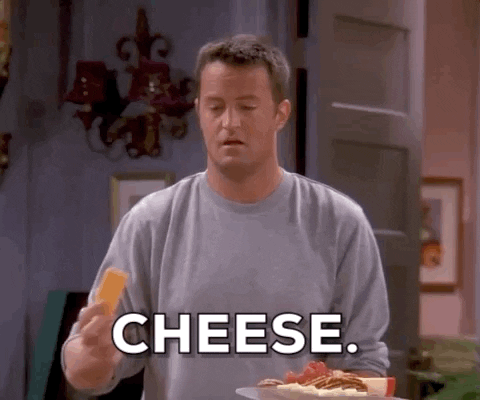
This, I would argue, is why so many teams either give up on brand messaging…
(And give into chaos)…
Or they compromise with a Frankenstein brand that makes everyone feel their voice has been heard.
But you have another option.
Yours,
Anna
Winning subject: Make your landers look more like this
Other subject: When a page repels the eye, they just won’t buy
861 Recipients
28.3% Open Rate
5.9% Click Rate
50 Clicks
5 Unsubscribers
Sent Mon, Jul 11 at 10:06am EDT
Hi there,
Getting paid is wonderful.
Conversion lifts are 🔥🔥🔥
But almost as much, I love brilliant design.
Seeing my copy LOOK good on a page… Well, there are few sweeter moments in business.
And frankly, they’re rare moments. Because a lot can go wrong with design.
So, I want to share with you an exemplary landing page from my client, UXReactor.
As context: This is a lead gen landing page + sales page, so if you have one of these in your funnel, check out how we’re selling the value here.
But the design principles apply to any of your marketing assets.
With the caveat that I’m not a designer, here’s what to look for:
- Does the design reinforce the message? Whether you’re reading the copy or looking at the design, you should get the same ideas and feelings about the brand and offer.
- Is it utterly readable? Fonts should be in high contrast and on the larger side. Short copy can be centered, but longer copy should be left-aligned. Wide margins are everything.
- Do the visuals draw the eye to the right place and make the most important things look most prominent? H1s should be the most prominent, then H2s, then H3s. Buttons should visually pop out. Images should support, never distract.
Also, please check your page on Screenfly or the like. I recently found that a client’s homepage hero copy was illegible on several different screens. 🤯
For some of you, these criteria are dead obvious.
But these rules are often broken, and it affects conversions… Because when a page repels the eye, prospects are not gonna buy.
(So forget what you’ve heard about ugly pages selling. Given the same copy, a well-designed page will outsell an ugly page.)
Of course, you’ve got to scale the investment in design to your business.
A copywriter’s website can get away with flaws that an e-commerce brand can’t.
Because in e-commerce, the expectations are higher.
Plus, e-commerce removes the human element in the sale. Whereas I can reassure a prospect that I’m trustworthy by how I behave in a sales call, your online shoppers only have digital cues that they can trust you with their money. Design flaws trigger subconscious fears.
Bad design also makes prospects work too hard. The eye has to struggle against visual chaos to find a path to critical information.
Good design, on the other hand, creates a smooth slide to the checkout.
And that’s why we celebrate it 👏👏👏
Alright, that’s it for today.
If you need referrals to designers, hit reply. I do have a list.
Yours,
Anna
Winning subject: What I spent to get here
Other subject: The only TRUE way to save on conversion copy
862 Recipients
31.7% Open Rate
0.1% Click Rate
1 Click
5 Unsubscribers
Sent Mon, Jul 18 at 10:20am EDT
Hey there,
I’ve been having a surprisingly fun experience…
Surprising because I told myself one of those, “Great for them, but not for me” stories.
You know the kind? Chances are, you’ve told a few as well.
The story I told myself was this:
That I can’t even BEGIN to give advice until I’ve buried myself in the client data and come out the other side with fanatical certainty.
Maybe that was true 5 years ago when I first invested in Copy School.
But it’s not true anymore.
There are sales psychology principles…
UX principles…
Principles of style…
All of which apply even if your eyes aren’t bleeding from coding data.
How do I know?
I’ve been doing copy coaching for an e-commerce brand.
So far, we’ve focused on their welcome sequence.
Starting with strategy:
“Who is the lead here? What do they already know? What do they need to know to buy?”
We did some quasi-fancy list segmentation.
Optimized the messages and offers.
Now we’re writing the emails together.
Emails that will guide the lead…
Belief by belief…
Towards the mindset of a buyer.
And it’s actually MORE fun to do this with someone else — shockingly!
You can move faster. Generate more ideas. Challenge each other.
So, there you go.
I was wrong.
And now I’m ready to repent…
By adding more copy coaching to my calendar.
If you — or someone you know — could use copy coaching, just hit reply.
I charge for copy coaching on an hourly basis (US 200, for now).
It’s a steal considering:
A) How much it actually costs to get high-converting copy done for you…
B) What it takes to learn via courses.
Case in point:
I’ve spent at least US 13k on conversion copy-related training alone.
Here’s my current “working in the biz” course folder:
(The top numbered folders are courses I return to all the time.)
Not everyone can justify this massive investment of time and money.
Not in a recession.
Not when you need to deliver the copy stat…
And you do not have 50 hours to take the course…
Then another 20 to fret about whether you’re doing it right.
Instead, you can draw on my proven, certified experience.
Hit reply if this tickles your fancy:)
Yours,
Anna
Winning subject: eCommerce homepage mega-post 🤯
Other subject: THIS is why homepages can be pricey
861 Recipients
42.5% Open Rate
16.3% Click Rate
409 Clicks
4 Unsubscribers
Sent Mon, Jul 25 at 10:05am EDT
Hey there,
Do you know Yongi Barnard? If not, you should.
(Look her up on LinkedIn. Her posts are 🔥🔥🔥)
Yongi is a multi-talented marketer who’s also one of the most knowledgeable conversion copywriters out there.
We bonded over 3 points of commonality:
# 1. Love of all things Copyhackers & deep cuts of Copy School.
# 2. Respect for content marketing & SEO.
#3. This one is just odd. I’ll leave it to the end.
So, when Yongi offered to write a post on eCommerce homepages, I knew it would be good.
I just didn’t know it would be SO good.
See for yourself…
eCommerce Homepages: Surprising Ways to Boost Conversions (+ Examples to Swipe)
Homepages for any industry can be TOUGH… But Yongi’s post breaks down this notoriously challenging page into achievable parts.
eCommerce homepages are often the worst of all.
Templated.
Promotion-driven.
Uninteresting.
I suppose, based on the assumption that visitors are hot & ready to buy.
A quick glance at the bounce rates reveals the truth, however…
So, when I overhaul homepages like these, I sometimes charge several thousand dollars for that single page…
Even if it’s only 1,000 or so words. It’s not about the word count. It’s about the research, the strategy, the brand messaging.
Read the post and you’ll understand why we can’t just whip together a high-converting homepage overnight.
And why it might be your biggest investment in copy.
Any questions, hit reply or contact Yongi directly.
…
Ok, ok, ok. I’m going to tell you #3 now.
The odd thing we have in common.
Yongi and I are both pastors’ kids. As in, the offspring of religious ministers.
I’ve made this joke elsewhere but religion basically INVENTED conversion, so… No surprise Yongi and I both went this route.
Talk soon,
Anna
Winning subject: 🐊 I didn’t wrestle the alligator… But I did take away this.
Other subject: If we ran this, would you come?
862 Recipients
30.3% Open Rate
4.4% Click Rate
38 Clicks
0 Unsubscribers
Sent Mon, Aug 01 at 10:07am EDT
Hey there,
Quick question.
The last time you created a value proposition, how’d you go about it?
Did you wish it could be easier?
Did you question whether, in the end, it has enough potency to lift your product above the competition?
If so, stick around.
Because you are definitely not alone.
I’ve talked to too many talented founders who tell me things like, “We’re not quite there with the value proposition.”
Even after spending $$$ with a brand messaging agency.
Obviously, it’s tricky for us as conversion copywriters if the brand doesn’t have a value proposition.
And it’s awkward if, as a conversion copywriter, you don’t know how to help your clients nail it.
(Suddenly, they start looking at you like a wordsmith again. Instead of a messaging strategist.)
After Yongi published this epic post on my site, we got to chatting.
We realized that we take a VERY similar approach when we create value propositions.
A lot of it I learned from Flint McLaughlin during two days in Jacksonville workshopping value props with MECLABS for my client.
Between stories about wrestling alligators (no joke)…
And stories about making undercover cop videos “for sociological research” in the 1980s…
Flint seared into my brain certain inviolable principles of value proposition design.
Yongi uses this method, too, so we’re simpatico in that sense — and more.
We both amp up the process by leaning on data and buyer psychology.
So you don’t have to take a huge, risky gamble on a value proposition that your team “feels confident reflects our value”.
In short, we take the conversion copywriter’s approach to value prop design.
Yongi does it for SaaS.
And I do it for eCommerce.
Since creating a value prop like this is THE KEY to writing a high-converting sales page of ANY kind…
And since it’s the linchpin of your brand messaging (after positioning)…
We decided to share our method.
My question for you is this:
If we ran a low-priced workshop walking you through each step of creating a high-converting value proposition, would you come?
Hit reply to let me know.
Because I’m thinking we’ll run it in September after the kids are back in school.
What do you think?
Anna
Winning subject: Usually, clients are surprised 🤷
Other subject: 🦸 Your hero message: is it what you think?
867 Recipients
41.3% Open Rate
10.4% Click Rate
166 Clicks
3 Unsubscribers
Sent Mon, Aug 08 at 10:15am EDT
Hey there,
Last week I talked about running a value prop workshop.
It’s still part of the plan for this fall.
But as Yongi and I plotted it out, we realized there’s a workshop before the workshop.
And not just because we’re nerds! Oh no.
The fact is that to nail your value proposition — or your hero message — you DO need customer insight.
Like Sinatra said:
Try, try, try to separate them
It’s an illusion
Try, try, try and you will only come
To this conclusion…
If you want love (aka a value prop that compels the click), you’ve got to be married to insight
So, before you can write a fortune-changing value proposition…
You DO need to listen to customers where they chatter online.
You need to ASK them why they buy.
And you need to find out how your product is actually positioned — not just how you say it’s positioned.
Usually, clients are surprised at what we find.
Because customers’ buying decisions are driven by FAR more basic impulses and rationalizations than any brand marketer imagines.
For example:
- Customers almost never care about the shiny technology or science behind a product
- Complex value propositions will not penetrate the buyer’s brain
- And they’re more ego-centric and emotional in buying than most marketers think (no really, WAY more than you’d think)
Now, I could tell you how to find what customers really care about. (I have, in fact.)
I could assign it to you as homework before we run a value proposition workshop.
But both are like asking you to drink from a fire hydrant.
That’s why Yongi and I are thinking we’ll start where conversion copywriters always start.
With insight. But not just ANY insight. The kind of insight that…
Pierces the soul of the buyer…
Cuts through the marketing fluff…
And gets straight to those basic motivations to buy. 🤯
So that when it comes time for you to write a value proposition…
You won’t be winging it (like nearly everyone else).
You’ll never overpay for an agency value proposition that was tossed on a whiteboard, inspired by creativity but untethered from reality.
And you’ll know how to keep your hero message closely aligned to customer needs. (No matter what shifts in your market and your product.)
Cool? Ok, I’ll be talking about this one-two step over the rest of the summer:
1) How to get the above kind of insight, faster, 2) How to use it in value proposition design.
And by September, there will be more details on how to sign up.
Anna
Winning subject: What would you ask me?
Other subject: Your #1 question?
866 Recipients
29.7% Open Rate
0.3% Click Rate
5 Clicks
4 Unsubscribers
Sent Mon, Aug 15 at 10:40am EDT
Hey there,
When this reaches your inbox, I’ll be right around here.
But to be real, this is a very short vacation…
Followed by a long and intense sprint of work — which brings me to the topic of the day:
What people want to pay me for now.
Clients are asking for help with customer insight.
They’re not just accepting it as a pre-req to conversion copy.
They’re actively saying they want to master insight so they can:
- Know their true value prop (instead of guessing)
- Hit the messaging mark again and again
- Create products with a super-tight market fit
But don’t just take it from me.
People who know what’s say that listening to your customers is now more important than ever. Given the economy.
Because there’s less money sloshing about…
And every lead costs more…
Optimizing for conversions is how you protect your profits.
But it only works when you know what customers truly need to hear and want to buy.
So, HOW do you go about listening? What exactly are clients paying me to help them do now?
No two scenarios are exactly the same.
- What if you’re a startup with no existing customers and no email list?
- What if your customers are too high-powered for interviews?
- What if you need conversion copy stat, and there’s no time, but you really don’t want to take a shot in the dark?
I’ve dealt with each of these scenarios many times over.
When we run a workshop around September, Yongi and I plan to cover scenarios like these…
So we can plan, I’d love to know what you’d ask if we were chatting.
Imagine we’re on a Zoom call. Here’s my summer relaxed face. So approachable, right? 😃
So, ask away.
If you’re a conversion copywriter: What part about the above is hard to sell or execute for your clients?
If you’re a marketer: What keeps you from the insight you know will change your company fortunes forever?
Hit me with your questions.
When I’m back from Killarney Provincial Park, I’ll definitely reply.
Talk soon,
Winning subject: why they buy: it’s not what you think
Other subject: enough with the bland value props!
838 Recipients
32.7% Open Rate
1.6% Click Rate
20 Clicks
6 Unsubscribers
Sent Mon, Aug 22 at 10:08am EDT
Hey there,
Last week I was here…
Staying at this lodge we discovered last year.
And if you’ve ever hunted for lodge-like accommodation, you know their websites are terrible.
So it’s not really a fair example.
But here’s the thing:
This lodge markets itself as a gateway to get other places. As a launching pad.
As if to say, “We know you wouldn’t actually STAY here for fun.”
But the fact is, they have the value prop all wrong.
Sure, you can rent a canoe there ($55/day) and immediately go backcountry.
Or, you can stay in a cabin (~$250/day) in what can only be described as a quasi-wilderness paradise for people like me.
A place where children can roam free without car traffic to worry about.
A river where they can catch frogs and snakes all day while I blissfully read a novel.
A short paddle to cliff-jumping spots like this. (Yes, my kid is one of the jumpers here.)
And the ambiance!
Here’s my dad and lovely stepmom in front of our historic cabin. (Built for gold miners!)
There was this delightful Irish owner who looked and dressed like he could be a current-day Rolling Stones band member. (Sleeveless leather vest, tight black pants, wicked grin.)
And being Irish, he told wonderful stories and filled the place with sentimental music.
Places like this barely exist!
But you would never know the value from the website.
The website copy actually repels people who care about experience.
😭😭😭
Yet the experience IS the value-add. It’s what people gladly pay more to have.
So, you may well ask:
How would a business like this pinpoint that value? (And avoid the circle of marketing hell reserved for bland value props.)
And I would tell you, once again:
By listening to people who take these kinds of vacations, in the places they chatter…
And by asking the right questions of actual customers in the right way.
We’ll be covering it all in our workshop in (ermahgerd it’s coming too soon) September.
I hope you’ll be there!
(Sign-up link will be sent but you can also just hit reply to be added to the waitlist.)
In the meantime, ask me any questions you have about customer insight for value props.
Talk soon,
Anna
Winning subject: 💁🏻 Workshop your value prop with me in Sept?
Other subject: 🏋️♀️Power message workshop is OPEN
836 Recipients
28.7% Open Rate
4.2% Click Rate
46 Clicks
4 Unsubscribers
Sent Mon, Aug 29 at 10:05am EDT
Hey there,
My friend Ivica is super direct.
He’ll tell you you’re wrong in a heartbeat.
“Hahaha. What is this bulls**t?” is typical Ivica.
And he loves to mock marketers.
So, when I gave him a copy of the Website Copy Framework to figure out his brand messaging… I braced myself.
Only instead of, “Why do you send me this crap?“
I got the closest thing to praise from Ivica.
“Yeah, so this is actually valuable. I think you could sell this.“
(Hint: I do. It’s a steal.)
But a week later, Ivica emailed:
Yes, yes it is.
The framework makes it easier.
But not easy.
No one said easy.
*Checks to confirm I never said it was easy*
But seriously. If finding your message feels easy, chances are you settled.
Like this trendy Toronto restaurant:
Could be a homepage headline for UPS.
There’s nothing about Baro’s ambiance and vibe.
Nothing about the coveted rooftop patio or the award winning guac.
The fact is, Baro can settle like this and still sell. Because there are 5M people in Toronto and ~10 rooftop patios.
But most businesses can’t afford to be so lazy and hit publish.
Because every visitor to your site matters too much.
Especially now.
And as budgets constrict, conversions will get more competitive.
That’s why in late September, I’m going to show you how to find the most powerful messages to sell your brand.
You can sign-up now for the workshop via this link.
Cool. I’ll answer a few here and more in the coming weeks.
First things to know:
You’ll sign up for Sept 28 @ 12-1 EST via Calendly.
When you do, you’ll get invites for the same time on Sept 29th and 30th.
We’re doing this 3-part style, so nothing is rushed.
Everyone gets recordings and templates.
Come in-person to have your questions answered + hold yourself accountable to finally nailing this.
Who’s it for?
Ideally, you sell products.
I specialize in B2C product brands and Yongi is focused on SaaS, so we’ll use those examples. However…
If you know you need a value prop for your service brand, come and we’ll answer your questions.
What’s the outcome?
You’ll come away with your hero message: your value proposition.
Based on data.
Craft it for your brand or for a key product. Both need to be differentiated. Both need to convert.
What if I’m a copywriter? Do I need this?
If you’ve done all of Copyhackers’ Copy School, maybe you have it covered.
Maybe you’ve already mastered the message-finding stage of conversion copywriting.
But if you feel a little fluttery when clients ask, “How do you know?” Or, “What’s your process?” Or worse, “Why do we need to pay for research?“
And you suspect you’re seen as a wordsmith vs. a data-driven consultant…
Then this is a no-brainer.
…
Any other questions, hit reply. Otherwise, save your spot and I’ll see you in September.
Winning subject: Brand decks so bad, I can’t even
Other subject: If you saw me on Copyhackers (it’s like that, but different)
832 Recipients
31.9% Open Rate
4.2% Click Rate
51 Clicks
2 Unsubscribers
Sent Mon, Sep 05 at 10:15am EDT
Hey there,
Last week I sent you the link to the Power Message workshop.
On Sept 28th we’re kicking-off a series of 3 x 1hr workshops where you’ll discover…
- How to find the most powerful messages to sell your brand and key products
- Via a process that takes the guesswork out of value prop design
- Even if you haven’t launched and have zero data
What can you expect?
If you watched me teach live on Copyhackers’ Tutorial Tuesdays you’ve seen not only my favorite shirt…
But you’ve also seen how I like to spill the tea on conversion strategies.
(Specifically, for a Copyhackers sales page I wrote 3 yrs ago that’s still live today, so you can be sure it’s profitable.)
This time, I’m sharing more.
At a higher level.
This workshop isn’t about writing one page.
It’s about finding the WHY THEY BUY message for every page, every email, every ad.
Otherwise known as value proposition design.
You can pay an agency five figures to do this strategy work, of course.
- But every time you pivot…
- Every time your audience or market changes…
- Every time you run a message test…
You’ll pay again.
And you’ll never know for sure if the agency’s value prop is the one that will sell…
Until you’re live with that expensive website.
It’s actually upsetting. I’ve seen TOO many brand decks crammed with…
- Fictional personas about Jerry, who takes his 3-year-old for ice cream every Saturday and loves ballgames…
- Fluffy values and bizarre emotional marketing schemas unrooted from data
- Self-indulgent brand stories (with far too many “we” statements)
But DEVOID of a single message that conveys WHY Jerry should BUY.
In terms Jerry would actually use.
Based on motivations Jerry actually experiences.
Sometimes I don’t even know what to say when I see those decks and calculate how much the client paid.
And I imagine how many months they spent waiting for the vacuous (but visually stunning) deck.
I’m speechless.
I want to tell them, “It doesn’t have to be that fancy.”
(In fact, there may be an inverse relationship between brand book bling and substance.)
I want to say, “Bring it back to why they buy.”
That’s the five, six, seven-figure skill.
I’ll show you how to master it starting Sept 28.
Anna
Winning subject: Why I’m paranoid about registrations
Other subject: “Roping people in’ is a strong statement”
836 Recipients
30.6% Open Rate
2.3% Click Rate
24 Clicks
1 Unsubscriber
Sent Mon, Sep 12 at 3:20pm EDT
“I don’t want to go! Don’t make me!“
This was me to my mom the other day.
Begging, essentially.
Digging in my heels.
See, she’s been organizing this event since before COVID…
Get this:
It’s a reunion for people born in the same hospital.
In the same small town that I was so eager to get out of, I hightailed it to the other side of the world at just 18.
Now you may well be asking (as am I):
Is there demand for such a reunion?
Like, “Hey, we shared an incubator! How’ve YOU been doing?”
Right?
She swears that no one is being “roped” into going. (As per my unfortunate choice of words 🙊)
Thankfully, mothers are forgiving.
Mine is such an enthusiastic organizer of people that I’ve veered hard in the other direction.
Instead of her massive confidence…
I.e., “Why wouldn’t you want to reunite with the doctor who birthed you 60 years ago? And there will be a RED carpet! And we’ll all be on the front page of the Stouffville Tribune and go down in history.”
(Helllllpppp!!!)
I’m more like…
Go if you want.
I promise there won’t be any raffle tickets, bad catering, or auctions.
Just massive clarity on how to use customer insight (aka data) to find your power message (aka your value proposition), so you can differentiate your brand and sell more products.
Maybe I’ll see you there. If not, no worries:)
Anna
Winning subject: What’s better: broccoli or loss aversion?
Other subject: I’ve never done this for myself (but you should!)
843 Recipients
31.9% Open Rate
1.7% Click Rate
22 Clicks
2 Unsubscribers
Sent Fri, Sep 23 at 4:51pm EDT
Hey there,
Imagine this:
You need a headline, stat.
A hook for your email or ad.
But what will grab your perfect buyer’s attention?
Obviously: Whatever they desire (or want to avoid) most.
Most of us have only a vague sense of what our customers crave (or revile).
Admittedly, that includes me! It’s true.
I’ve NEVER gone through the full conversion insight process for my own brand, using my own target customer… Because I’m fully booked with clients all the time. Never a lull.
Luckily, my value prop is powerful enough… because I made solid guesses… and because I’m riding the wave of desire for higher conversions.
But not everyone makes the right guess.
And some of my clients don’t have a wave to ride — they’re trying to create the wave.
So just nailing the thing your customers value most?
It might make you feel a little like my alter-ego, Chidi:
Chidi personifies my occasional shadow side — the side that needs all the data.
I can satisfy my inner Chidi (and transform the indecision into clarity, confidence and certainty) when I use the process I’ll teach starting Sept 28th.
Here’s the Power Message Workshop sign-up link if you’re ready.
Now, 99% of my client work can’t be shared, but I’ll anonymize an example here to illustrate.
(I’m cringing a little because this is so unspecific.)
Through research for a client, we discovered there are a few possible value propositions…
- A long-term, life-changing benefit (your future will be more stable)
- Short-term loss aversion (you’ll pay 10x less over time)
- Instant loss-aversion (you’ll get x for free when competitors make you pay)
How do we choose?
Can you guess?
What would you choose?
As you may have noticed, #1 is a little like broccoli.
Organic broccoli from an artisanal farm. But it’s the “good for you” message. And it feels distant. Especially for this audience.
So, we know that even though #1 is the value proposition the customer SHOULD desire most, it has to be a secondary benefit. Not the power message.
We also know that people are more motivated by instant or near-instant benefits. And some research suggests that loss aversion (avoiding pain) is a stronger motivator than any promise of gain.
So, #2 and #3 are excellent candidates for the brand’s value proposition.
Through competitor analysis, we know that #3 is less exclusive to my client’s brand, and exclusivity is very important for a high-converting value proposition.
Luckily, #2 is exclusive, very desirable, and tightly associated with loss aversion in the short term.
Just like that, we have narrowed the field of possible value propositions to one winner.
Beautifully logical. (My inner Chidi is smiling.)
And that’s what we’re going to do next week, together, in a workshop where you can ask Yongi and I anything about your value proposition.
Anna
Winning subject: Emperor’s new clothes scenario?
Other subject: 💸 This usually costs a lot (for good reason)
848 Recipients
30.0% Open Rate
1.9% Click Rate
22 Clicks
5 Unsubscribers
Sent Tues, Sep 27 at 10:10am EDT
“How do I say this diplomatically?” I wondered.
Then I just straight out asked:
“What’s up with brand messaging decks I see from so many agencies? Why are they so… so bad?“
This was in conversation with my unofficial mentor, Suzie Yorke, who grew her Love Good Fats brand to $100M in 3 years and is the most brilliant B2C brand strategist I know.
(For the record, she didn’t consent to be my mentor. I just claimed her when we worked together 8 yrs ago.)
Suzie said, “Well, an agency is only as good as the client.”
Fair enough.
And she went on to explain that if you don’t know…
- Your customer’s real pain points, aspirations, alternative solutions, triggers to buy, hesitations…
- Why your brand is different and better for that specific buyer…
- How to convey that value in words that make your customer say yes…
Then there’s only so much an agency can do!
They’re not magicians.
Which is why sometimes…
You pay $10k for a brand value proposition that takes an agency 3 months…
Looks slick in the slide deck…
And sounds like marketing…
But you silently wonder if it means anything at all.
And when you test it with customers, their eyes glaze over.
That’s not the kind of value prop we’re creating in the Power Message workshop series.
Instead, you’re going to create the kind of value prop that only top-tier marketing leads can get from agencies.
Because you’ll be able to tick off the essentials Suzie listed.
And on the flip side, if you’re a copywriter or marketing consultant, you’ll learn a process that can become a lucrative service offering.
When my client flew me to Jacksonville to workshop their value proposition with MECLABS, they made a five-figure investment for two days.
That’s the value of a high-converting value prop — even for small to mid-sized businesses.
In fact, I regularly sell a $10k service, the core of which is what we’ll teach in the Sept 28 workshop. (With a few more bells and whistles you can learn over time.)
So, if you…
- Are a marketing leader who has to hire branding agencies
- Work in-house on brand and product messaging
- Are a freelance CRO consultant, conversion copywriter, or the like
And you want to be on the high-ROI, profitable side of value prop design…
Then join Yongi Barnard and me for just 3x one-hour workshops, starting Sept 28. (TOMORROW!!!)
The cost? Because you’re doing it yourself as part of a group, with feedback from us… It’s not five figures or even four figures. It’s $97.
Even 15 minutes of feedback on your value prop is worth far more.
Because if you get your value proposition right, you can take that message to the bank, again and again.
Click to book yourself in and we’ll see you there.
Anna
Winning subject: Scarcity and congruence (persuasion hacks)
Other subject: Haven’t seen THIS often
860 Recipients
36.6% Open Rate
2.9% Click Rate
29 Clicks
6 Unsubscribers
Published Mon, Oct 24 at 7:10pm EDT
Hey there,
On Sunday, I woke to find my 9-year-old and his sleepover friend on top of the garage roof.
Beautiful October sunlight illuminated their little faces.
From the window, I could see that his friend had only slip-on sandals pressed against the incline.
Another spike in cortisol.
Another rapid-fire decision.
Another morning.
“Just be consistent.”
It’s what they say about parenting.
It’s what they say about marketing, too, which is no less difficult.
And often difficult for the same reasons.
I.e., Maybe you, like me…
- Love to learn and change and experiment!
- Are human (and thus get bored, tired, impatient)
- Forget what you did last time, which makes consistency impossible
These are not terrible traits. At least, that’s what I tell myself 😉
But when it comes to reinforcing basic concepts in the minds of small children…
Or imprinting your brand idea on the brains of your ideal buyer…
Inconsistency has a downside.
Namely, forgettability.
No one will remember the 29 nuanced benefits of not climbing the garage or of buying your thing.
They will remember one.
If it was vivid.
That’s why I’m always on the lookout for brands with big ideas executed consistently.
When we can prove that one idea is better than 29, we can get away from everything-but-the-kitchen-sink copy assignments.
(“But can you add x benefit? And what about y feature? So we can appeal to z customer segment as well as the rest of humanity.”)
☝️ That’s how we dilute the message.
That’s also how we make testing impossible because there are too many copy variables.
In contrast, single-minded brand ideas can be tested, which is the KEY to optimization and growth over time.
To that end, I put together this new post on brand consistency, with examples from DTC brands.
It was inspired by a Boll & Branch product launch with an unusual scarcity play + remarkable continuity and congruence.
Check out the post and let me know what brands you think are killing it with consistency.
In the meantime, I’ll be consistently drinking vast amounts of coffee over here to get through the excitement of parenting small boys.
Talk soon,
Anna
Winning subject: I still use this formula ALL the time
Other subject: This post gets a lot of traffic
860 Recipients
39.2% Open Rate
8.3% Click Rate
92 Clicks
6 Unsubscribers
Sent Mon, Nov 07 at 10:04am EST
Hey there,
When I started out in copywriting, sales pages were the most daunting.
I was in awe of Copyhackers’ sales pages. Had no idea how to structure one myself.
Before I bought Copy School in late 2017, I bought a sales page template — but it didn’t teach me the deep structures of sales pages.
The sales pages I wrote back then were transparent. Simple. Lacking depth.
But when I dug into 10x Sales Pages?
It was magical. It was like taking Macro Economics 101 and finally understanding how the world works. Same feeling.
So, I had serious ‘anxiety of influence’ when Joanna Wiebe hired me to write the sales page for her 10x Facebook Ads course in 2019.
That sales page is still live over 3 years later. Check it out here.
In April 2020, I wrote another very difficult sales page.
The economy was rapidly changing. Emotions were high. I wasn’t sure I could nail the zeitgeist.
After it went live and the program sold out, I sat down late one night and documented my approach: my interpretation of 10x Sales Pages and how I mashed together Joanna’s track and the track by Ry Schwartz.
It was just a thing I did for myself. To remember my process.
But that post on how to write sales pages the 10x way ranked on search fast.
It’s since been viewed by 6.5k people.
And ironically, I don’t even offer to write course or group program sales pages anymore. Occasionally, existing clients will ask for one, but it’s not something I advertise because I specialize in DTC now.
Even though I turned down the fame and fortune of sales page copywriting (lol), I still use the structure of a long-form sales argument all the time.
Sometimes I break it up from ads to landing pages, then to emails and product pages.
Sometimes I truncate it on a product page.
Knowing how to sell like that is transformative. You can play with that formula across the sales funnel — when you’re writing anything that has to sell.
Highly recommend taking that Copyhackers course.
But if you’re in a hurry and want to know what it’s all about, read my blog post.
Talk soon,
Anna
Winning subject: Get out your pick. Here’s where the gold lies.
Other subject: “Sitting on a gold mine”
854 Recipients
35.7% Open Rate
2.0% Click Rate
18 Clicks
2 Unsubscribers
Published Mon, Nov 21 at 10:15am EST
Hey there,
This is a quick tip.
A thrifty way to turn otherwise “lost” leads into subscribers… who then tell you exactly what to optimize next.
Here’s how it works:
Say you have a product page. Maybe it’s a landing page for a PPC campaign, so a lot is riding on this page.
You’ve put in a 5-star effort to optimize it to the hilt, but you know some visitors won’t convert.
Alas! It’s inevitable.
So, you set up an exit intent lead magnet offer. (Not a 10% discount, as I’ve written in this post. Remember, they haven’t expressed serious interest in your product.)
Now, here’s what most people forget.
(And thus, never find out what’s keeping visitors from buying. Which leads to all sorts of wasted effort, recriminations, and self-doubt. So don’t be like those people who forget!)
Include a survey in the email sequence to new subscribers.
Make it simple and appealing.
First, ask what was going on in their lives when they sought out your product. Then ask what, if anything, is holding them back from purchasing your product.
Let the responses roll in.
And find out exactly why your leads aren’t converting.
Here’s what my client said to his team when he realized I’d baked this into their funnel.
This is why I don’t need to “know” much at all.
I just know how to ask the right people the right questions at the right time.
Hit me if you have any questions.
Anna
Winner: 2023 will be totally different
Other subject: Better to move before the snow flies
887 Recipients
34.4% Open Rate
0.5% Click Rate
3 Clicks
0 Unsubscribers
Sent Mon, Dec 12 at 10:10am EST
“Better to move before the snow flies,” I said to myself.
It was inevitable, the move. The charm of the vintage house with the big yard was wearing thin. It was starting to feel like too much maintenance. (To which my 70-something-year-old neighbor said, “You’re not 90 yet!”)
But I was also tired of scraping ice off my car and shoveling before school drop-off.
I wanted an easier life.
And so, the Conversion Copy Co. HQ has moved from here…
To here…
We call it the Plaza Hotel. 😹
(It’s a very modestly fancy condo surrounded by plazas.)
In the process of making a big change, I could no longer ignore the fact that my business only runs when nothing in life goes awry. It only works when I can work at 100% most of the time.
This is a risk that I’ve been ignoring for years.
Because I’m healthy as a horse. Because I can keep slogging for long hours. Because the risk makes me feel a little bit more alive.
But it’s not just about me. People in our lives need us at inconvenient times.
I was reminded of this when I had lunch with a friend, very close to my age, whose mother died after a long illness during which my friend was a caretaker. It was only possible because she could step back from her executive work and attend to her life.
That story struck me. And I wondered, “Could I do that?”
The answer is no.
And it has to be yes.
So, in 2023 I will be making more changes.
Taking fewer clients while I work on my own life sustainability project.
More news on that in the future as the plan coheres.
What won’t likely change? As long as you’re a subscriber, you’ll get any conversion or messaging insights I think are valuable to share.
In case too much life happens between now and the year’s end…
I wanted to wish you a happy holiday!
I hope you can enjoy true rest and spend time with your loved ones, then welcome the new year with peace of mind. That’s my plan:)
Anna
P.S. 2023 was totally different! Read about it in my emails.
My last newsletter of the year was totally prescient! 2023 was going to be a completely different year. You could see it coming in the 2022 emails.
I made a harder push around September 20022 when Yongi and I ran the value proposition workshop. This was followed by a period during which I went silent, thinking about how to make the business more sustainable.
In 2023, I did less marketing and sent fewer emails. Read them here.

